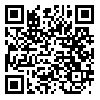Volume 9, Issue 1 (3-2022)
NBR 2022, 9(1): 17-28 |
Back to browse issues page
Download citation:
BibTeX | RIS | EndNote | Medlars | ProCite | Reference Manager | RefWorks
Send citation to:



BibTeX | RIS | EndNote | Medlars | ProCite | Reference Manager | RefWorks
Send citation to:
Javanbakht H, Heidari N, Alinezhadi I. Evaluation of sexual dimorphism on the basis of morphometric traits in Talysh toad, Bufo eichwaldi (Litvinchuk, Borkin, Skorinov & Rosanov, 2008), along with the evaluation of the conservation status of the species . NBR 2022; 9 (1) : 2
URL: http://nbr.khu.ac.ir/article-1-3466-en.html
URL: http://nbr.khu.ac.ir/article-1-3466-en.html
Department of Animal Biology, Faculty of Biological Sciences, Kharazmi University, Karaj, Iran , heydari.ns@gmail.com
Abstract: (5788 Views)
The status of sexual dimorphism patterns in human and various animal groups including some mammals, birds, reptiles and amphibians have been studied, however, despite the fact that a growing number of studies were aimed to describe sexual dimorphism patterns in external morphological features such as the proportion of toes in animals, our knowledge of some basic issues, specially in some animal groups, is still limited. In this study, sexual dimorphism in terms of external morphological features as well as the ratio between finger lengths II to IV (2D: 3D, 2D: 4D, 3D: 4D) of the front and rear limbs in 30 specimens of Bufo eichwaldi toads (15 male and 15 female specimens) were in northern Iran. The results showed that females had higher mean body length (SVL) than males and this difference was statistically significant (90.50 mm in males vs. 114.93 mm in females and P = 0.00). In terms of other morphological traits, the results of T-test analysis (T test for independent samples) showed that the traits of diameter between two eyes (IOD), tympanum diameter (TD), length of the humerus (LHU), forearm length (FOL) and foot length (FL) had significant differences (P ≤ 0.05) between males and females. Also, the ratio of the size of the length of the fingers and toes on the left side of the body was examined in the species studied in terms of 2D:3D, 2D:4D, 3D:4D. The results showed that males and females were significantly different in two traits including 4th toe length (D4) and 1st finger length (F1). In addition, in terms of 2D:4D between males (0.4628) and females (0.4853) significant difference (P = 0.041) in the second and fourth toes of the hind limbs and in terms of 3D:4D between males (0.6233) and females (0.6787), there was a significant difference (P= 0.040) in the third and fourth fingers of the hind limbs. In this study, some habitat characteristics, ecology, threats and conservation measures related to Talysh toad species were also investigated.
Article number: 2
Type of Study: Original Article |
Subject:
Animal Biology
Received: 2021/05/30 | Revised: 2022/03/16 | Accepted: 2021/12/14 | Published: 2022/03/16 | ePublished: 2022/03/16
Received: 2021/05/30 | Revised: 2022/03/16 | Accepted: 2021/12/14 | Published: 2022/03/16 | ePublished: 2022/03/16
Send email to the article author
| Rights and permissions | |
 |
This work is licensed under a Creative Commons Attribution-NonCommercial 4.0 International License. |







